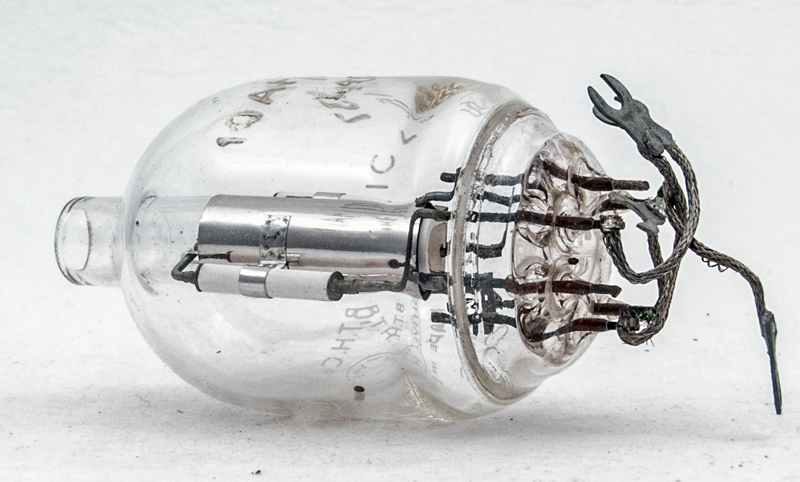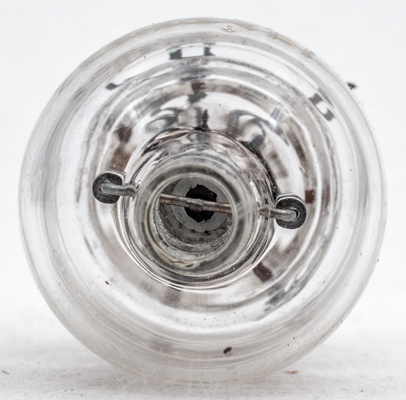
|
This exhibit is a Ozotron and is used to detect halogens in the air passing through the device. The tube at the top is open through the device. BTH stopped making valves in the 1920s when AEI was formed and their production became mainly for the defence industry. This sensor would form the heart of a leak detector.The following extract is from Additional Principles and Methods of Analysis. Volume 5.Goulden et al, (1963b) attempted to circumvent the problem of the nons-pecificity of the electron-capture detector by adding in series with an electron-capture cell a halogen-sensitive cell of the type used in refrigeration leak detection. They used an AEI Ozotron Type H halogen-sensitive element (Associated Electrical Industries, Ltd., Leicester, England) and a boro-silicate glass-enclosed chamber containing a pair of concentric platinum cylinders through which air may be drawn at the rate of 150 ml per minute. It is worth noting that the anode platinum cylinder was alkali treated. Heat is derived from an internal platinum filament which takes a current of 7.4 A at 6 V AC, and operated at a temperature of 8000C. The anode-cathode potential of 250 V DC was used, producing a positive-ion standing current that could be amplified. Air containing halogen vapour, passed through the cell, increased the positive-ion current and was a measure of the amount of halogen present.The tentative conclusion was that the detector was tenfold superior to the electron-capture detector in selectivity for halogenated pesticides and that one of its chief merits resided in its exceptional selectivity toward the halogenated pesticides compared with that toward the natural components co-extracted from crops, soils, or tissues. With the circuitry design of Goulden (Goulden et al 1963b), the limit of detection For aldrin was about 0.1 nanogram. It was noted that redesign of this detector for specific pesticide analysis studies should make it more efficient in electrical stability and sensitivity than the electron-capture detector.
Looking into the open top tube.
Looking up from the base a ceramic plug is visible.The Wide glass tube envelope is 38 mm in diameter, and excluding the flying leads is 63 mm tall.References: Observation and Internet. |
Updated April 12, 2015.
|
|